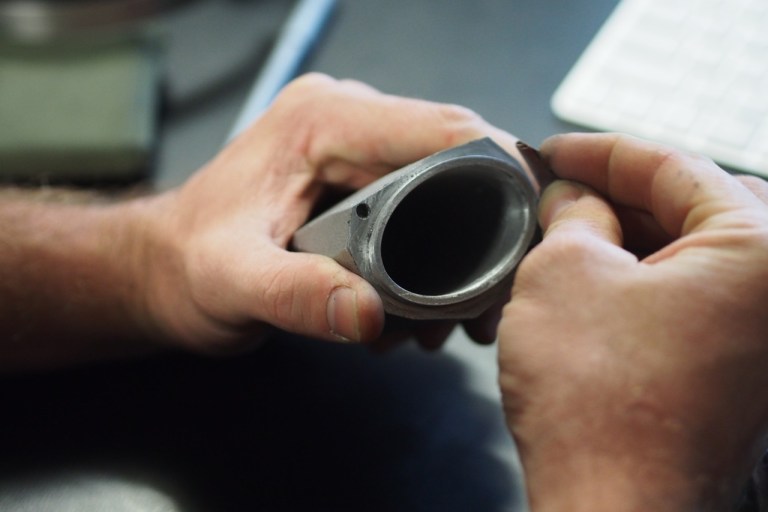Visiting his studio in Sydney, Andrew Simpson’s approach to design is instantly made clear. His studio and design house, called Vert, is packed full of prototypes, design objects and machines. As well as being a place where the design team gets on with their computer-based design work, the space is full of objects at every stage of making.

This is emblematic of Andrew’s approach to design. He wants to know how things are made, and to improve on that process himself by making something new, by “experimenting at the process edge of making” as he phrases it.
When I visit, the team have just received the VM Case in milled aluminium which will be finished in the studio – these are about to be shipped to Milan for the fair. For Andrew, these cases are an object designed to be treasured – and to be used in the act of treasuring other objects: pencils, glasses, whatever you want to look after. “Design can’t change behaviour, but it can remind you of things you want to change,” he explains. “This case does that by reminding you to look after your things.”
Other projects are more personal – for Andrew, the flat-pack DIY rowboats and sailing boats he created for The Balmain Boat Company and his DIY O Six Hundred Kayak (designed with Ben Cooper) are all about creating that human connection in design [more on this kayak design]. He explains that there’s nothing better than getting together to build a boat and then taking that boat out on the water and knowing you built it.

Also important is an interrogation of process and materials – Andrew’s experimental approach has led to materials innovations such as a plastic Bento Box made with recycled plastic sea waste (a collaboration with Sarah K) and a new project creating objects out of used coffee grounds for Nespresso [more on ethically-sourced materials]. In order to encourage innovation and practice-led research, Andrew devotes 30% of the studio’s time to self-initiated projects, many of which end up informing client work.


Andrew’s team at Vert is also prolific – I am amazed to discover the sheer number of products they have designed over a ten year period, as well as the diversity of types – there is glassware, ceramics, but also medical equipment and electronic consumer goods. There’s fashion including accessories, jewellery and footwear, but there’s also motorcycle parts, pet collars and artwork, teddy bears and packaging, sex toys and tupperware.
Across all of these projects, Andrew retains a hands-on approach to design, preferring to discover by doing, but is also introspective about the role of design in the modern world. “I’m always searching for meaning and value in design, otherwise it’s just a collection of atoms,” he explains. “I would explain my approach as ‘no bulls**t’. Design either fulfils a need, or it doesn’t – an object can’t lie when you touch it or put it to your lips.”
More on Andrew Simpson





